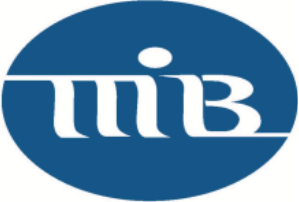TISA. Q: We have recently made a change that our online banking logins will expire after 18 months if a customer has not logged in. This may trigger them to begin being assessed paper statement fees, if they sign up for e-statements (there is no cost), as the paper statement fee is determined by an online account being established and maintained. The $3.00 paper statement fee is listed as one of our fees on our fee chart; however, customers don’t know that they have to log in every 18 months to keep their online account from expiring and therefore start incurring the paper statement fee. I feel that this should be disclosed in some way, but I’m not sure how best to do it. We can push a message to all online account holders. Would that be acceptable?
A: Yes, the bank should have been disclosing this all along on its TISA account disclosures for the account affected because Regulation DD requires the financial institution to disclose both the amount of any fee that may be imposed in connection with the account (or an explanation of how the fee will be determined) and the conditions under which the fee may be imposed.
Failing to log in at least every 18 months, in this case, is the condition under which the fee may be imposed. So, the conservative approach would be to send a corrective disclosure to your existing customers disclosing both the fee and the condition (logging on, etc.). Also, you need to make sure the TISA account disclosures for affected accounts include this information for future customers.
ECOA. Q: My understanding of when providing an appraisal to an applicant is that if there is an application that has multiple first-lien dwellings, then the appraisal disclosure and appraisals would not need to be given to the customer. This is because Regulation B provides that this requirement applies to an “Application for credit that is to be secured by a first lien on a dwelling.” Am I correct on this issue?
A: No, you are not. I find no exception to this requirement for transactions secured by more than one dwelling. As long as there is at least one dwelling with a first lien (mortgage or deed of trust), the requirement to provide a copy of any appraisal/valuation would apply.
FCRA/Privacy Q: We recently made several minor changes to our Privacy Notice, but one more significant change under the section “Reasons we can share your personal information.” In that section, we changed from stating that “we do NOT share information with our affiliates for their everyday business purposes” to “Yes, we do share.” The bank owns 50% of a title agency that we share information with.
My question is, do we need to mail the revised privacy notice out to our customers or could we include a statement message letting our customers know where to locate the most recent privacy notice on our website?
A: Your question hits on an intersection of two regulations — Regulation V (Fair Credit Reporting) and Regulation P (Privacy). Regulation V lays out the requirements for sharing consumer information among affiliated entities, while Regulation P does the same for sharing consumer information with non-affiliated entities. They are joined to an extent because Regulation V (and the FCRA itself) allow its opt-out notice to be “coordinated and consolidated” with another similar notice — such as the Regulation P privacy notice. Regulation P explicitly provides for including the Regulation V/FCRA notice as an integral part of its model privacy notice.
With that said, Regulation V requires that a bank give a consumer appropriate notice — either in writing or, if the consumer has agreed, electronically — before sharing the consumer’s information with an affiliate so that the affiliate may market to the consumer and give the consumer a reasonable opportunity to opt out of this sharing before the sharing occurs.
All of this argues against merely using something like a statement message. There would not be room for the required language — and there is nothing in the rules that explicitly allow merely providing a web address (where the full notice may be accessed) as a substitute for the required notice. The best route would be to send revised privacy notices to affected consumers and provide them with the required opportunity to opt out of the sharing before the sharing with any affiliate commences.
Follow-up Q: If there is no option to opt-out, could we just post the revised privacy notice on our website?
Follow-up A: No, the rules require providing it in a manner that ensures that the consumer/customer actually receives it. Generally, it is not considered reasonable to presume that all customers regularly access the bank’s website.
TISA. Q: We are going to migrate customers from their current accounts to our new accounts. In the change letter, do we need to state all the negatives such as maintenance fees increasing, a new paper statement fee, no free checks, and no free cashier’s checks? We will be sending the TISA account disclosure with the letter.
A: The bank cannot simply rely on customers reading the account disclosures. Regulation DD provides that if a financial institution provides notice through revised account disclosures, the changed term must be highlighted in some manner. For example, financial institutions may note that a particular fee has been changed (also specifying the new amount) or use an accompanying letter that refers to the changed term. So, your cover letter will need to point customers to the changes that increase their costs (or reduce their earnings — interest rates).
RESPA/TILA/Privacy. Q: We are purchasing a small number of residential loans from another financial institution. We have confirmed that the selling bank will be sending out a Notice of Servicing Transfer Letter. Do we have to send out our own Notice of Servicing Transfer Letter as well?
In addition, are there any other required notices that have to be sent to the borrowers — for example, our privacy notice, first payment coupons, etc.?
A: Either separate mortgage servicing transfer notices, or one combined notice, may be sent — as long as the proper notice is given in the proper time, as required by Regulation X (RESPA). If the seller is not including your bank’s notice information in its notice, then your bank will have to send its own buyer’s notice.
There is also a mortgage transfer notice required by Regulation Z since the bank is acquiring the loan itself, as well as the servicing of those loans.
The bank’s privacy notice should also be sent since this is the beginning of these borrowers’ customer relationship with a new-to-them bank. Other notices or documents might be required by your state’s laws, but you need to check with your legal counsel on that issue.
CRA/Interstate Branching Q: We have one branch in a neighboring state and the loan-to-deposit ratio for that branch was 33% at the end of 2022. The Section 109 Host State Loan to Deposit Ratio for that state, as of June 30, 2021, is 69%. We are supposed to be lending there at a level that is at least one-half of the Host State Loan to Deposit Ratio for that state.
Since we failed this first Section 109 test, we have to show the bank is reasonably trying to help meet the credit needs of the communities served by our interstate branches.
First off, is this that big of a deal? Second, should the bank be doing additional advertising, outreach, etc. to try and generate more loans?
A: Yes, it is a big deal. The regulators could require the bank to close the interstate branch if both tests are failed: LTD ratio is below the threshold (which you say it is) and the branch is not adequately meeting local credit needs. Determining and documenting the latter is what you need to concentrate on. The FDIC’s examination manual has a section on these requirements (as do the examination manuals from the other regulators).
TILA. Q: With rates increasing, our adjustable-rate mortgages (ARM) are coming back into play. Is there a rule regarding how to calculate the annual percentage rate (APR) for ARM loans to use for advertising? We want to advertise our 5/1 ARM, with a fixed rate period APR (for five years). We notice that other banks’ APRs seem to be lower than ours. We want to be sure we are advertising correctly but not scaring folks away with a too-high APR number.
A: How to compute the APR for an ARM depends on what type of ARM it is.
For a plain vanilla ARM (no initial discount/premium), the lender is required to assume that the initial rate will remain in effect for the loan term (since future changes are not known). This is the method to be used for an ARM with an initial fixed-rate period only if that initial rate is computed using the same formula (e.g., index plus margin) that will be used for future rate changes.
For an ARM with an initial discounted/premium rate, the lender is required to compute a composite APR based on the initial rate for the time it is to be in effect and the rate for the remaining loan term once the discount/premium goes away (which might take more than one rate change to accomplish depending on the magnitude of the initial discount/premium amount compared to any periodic rate change caps).
Young & Associates provides banks and thrifts with support for their compliance programs, independent reviews, and in-bank training, as well as a full menu of management consulting, loan review, IT consulting, and policy systems.









